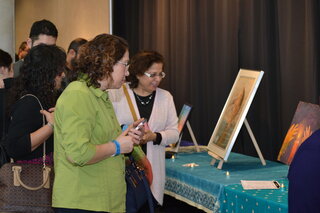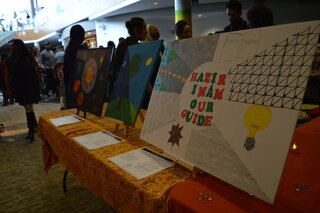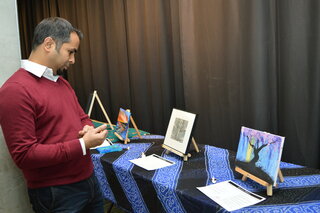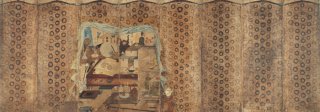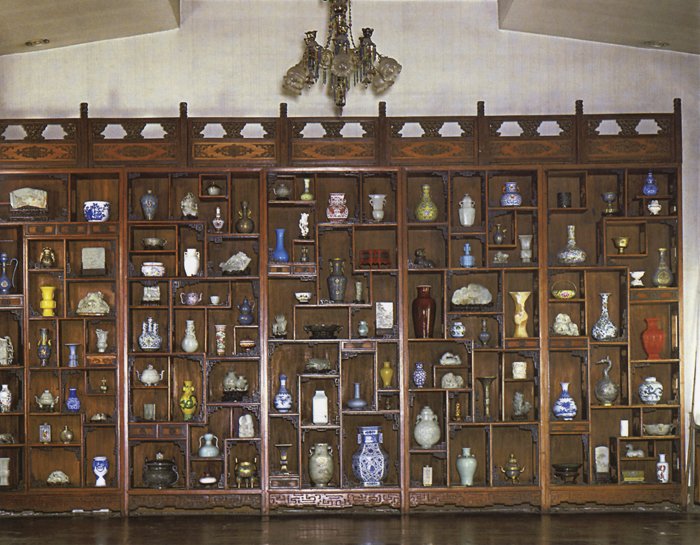
Duobaoge in the Shufang Zai (Hall of Enjoyment of Beauty), 18th century. Forbidden City Palace, Beijing
, 18th Century
195.6 x 361 cm (h x w)
A large cabinet displaying predominantly ceramics decorates the banquet hall of the Forbidden City Palace. The asymmetrical shelves each hold a work of art perfectly made for each object. The variety of mediums, colors, and sizes encourages the viewers to inspect each piece individually. In contrast to Korean chaekgeori, Chinese duobaoge is a collection of physical objects as opposed to a painting of one’s personal collection or the collection they aspire to own. This difference emphasizes the importance of collecting in Chinese aristocratic culture, a longstanding tradition. The physical ownership of numerous artworks highlights one’s financial and social status in a more literal sense than chaekgeori.

